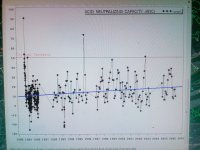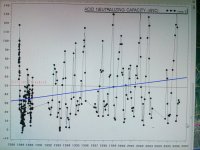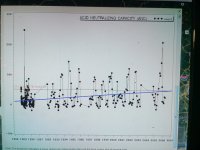have now used the hach kit on a few small nepa streams - some I had published pH data for, some class a, some "new and what the hell." the kit is easy to use. helps that I bought extra tubes so could pull some water from multiple streams, or keep samples from multiple streams fished.
pH readings all made sense: they converged w/ published pH allowing for flow factor (lower pH with more rain rainoff).
also predicted whether Id catch more or less ST pretty well, adjusting for habitat, temps, the possibility of streams drying out in the summer.
kit is too big for vest, so I tested streams at road crossings where possible. others I fished and brought water back.
rather than just guessing/gauging pH from headwaters geology, conductivity, swampy headwaters, etc., better to have a quick ph test on stream too, or at least one when you get back to the car.
thanks Millsertime for mentioning the hach kit!








